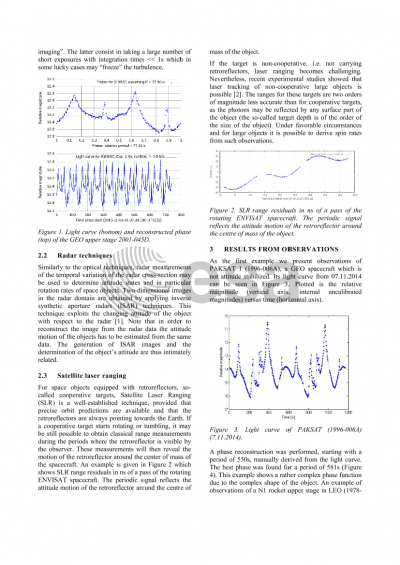Document details

Abstract
The currently proposed space debris remediation measures include the active removal of large objects and “just in time” collision avoidance by deviating the objects using, e.g., ground-based lasers. These techniques require precise knowledge of the attitude state and state changes of the target objects. In the former case, e.g. to devise methods to capture the target with a tug spacecraft, in the latter, to precisely propagate the orbits of potential collision partners, as disturbing forces like air drag and solar radiation pressure depend on the attitude of the objects.
A reliable and prompt determination of the attitude and attitude motion of an inactive spacecraft is also required in contingency situations.
The paper will describe new techniques to determine space debris attitude states and to model their temporal evolution by combining heterogeneous observations from different ground-based observation techniques including synthetic aperture radar measurements, optical light curve observations, and cooperative laser ranging measurements. Results for a set of decommissioned or lost LEO, MEO and HEO spacecraft and upper stages will be presented.
Preview






